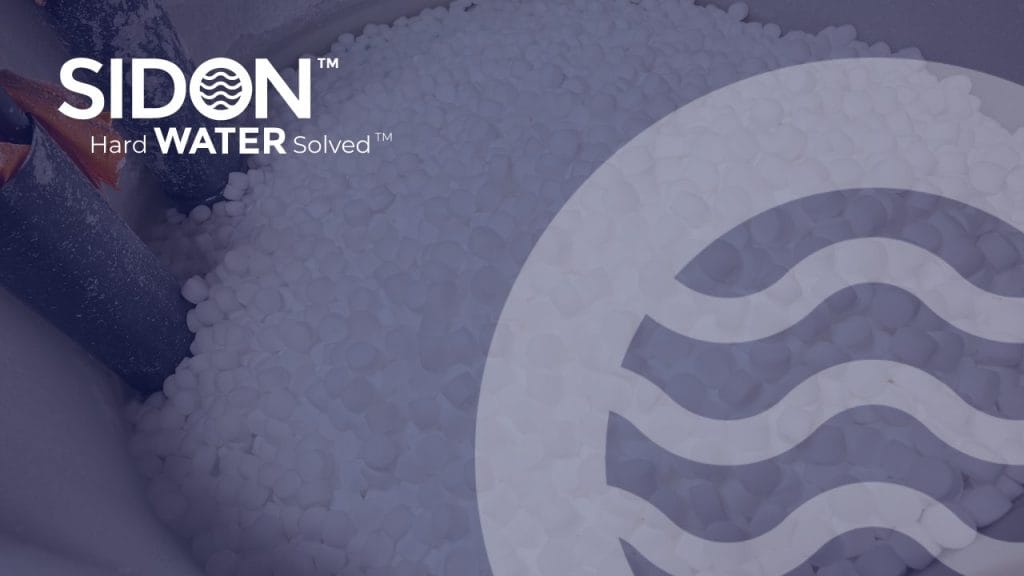A salt softener is a hard water treatment device which replaces naturally occurring minerals (primarily calcium and magnesium) with sodium, in a process called ion exchange. Hard water is typically high in calcium and magnesium ions which leads to build-up of limescale throughout entire water systems, boilers and other appliances. This build-up has a significant impact on energy consumption as well as water and energy efficiency and maintenance.
How Do Salt Softeners Work?
Salt softeners typically use a system of resin (plastic) beads, which are negatively charged with sodium ions (anions). These beads attract and capture the positively charged calcium and magnesium ions (cations) as the water flows through the system. Having removed them from the water, the bead then releases a sodium ion which flows out of the system as softened water. Other positively charged ions such as iron and manganese will also be removed by the beads.
The capacity of the plastic beads to continue to effectively attract the cations is depleted over time due to the burden of calcium and magnesium and they must be regenerated with a salt solution. Salt must be manually added to the system, in the form of sodium chloride, to produce the solution which is washed over the beads, restoring their negative charge and flushing the calcium and magnesium out as effluent. This process is known as regeneration or back-flushing. If the system runs out of salt, the water passing through it will no longer be softened and the system is completely ineffective.
So, what impact do salt softeners have on the environment?
By removing the minerals that lead to scale build-up in water systems, traditional salt softener systems do play a part in improving energy consumption and improving the lifespan of appliances.
But this benefit comes at a greater cost to our planet. The most common regenerant used to flush the system and restore the plastic beads is sodium chloride. Chloride is toxic to aquatic life and even low levels can produce harmful effects in freshwater ecosystems and damage agricultural crops by causing leaf burn.
The regeneration process in salt softeners can run 2-3 times a week and in some instances in areas of very hard water, it can even be daily. Once the regeneration process is complete, the sodium chloride is discharged as effluent into the sewage system, along with the calcium and magnesium ions. Chloride cannot easily be removed at treatment plants meaning it ends up in our rivers, lakes and streams. The discharge of sodium chloride into the municipal water system also negatively impacts the natural organisms which breakdown the solid waste in the sewage treatment plants.
Another issue associated with the discharge of the calcium and magnesium ions is that they may precipitate out and form scale in the discharge and sewage pipes, thus the salt softening system is only displacing the issue of scale to somewhere else, not eliminating it.
The system also removes ions such as ferrous iron. The metal ions that bind to resin beads tend not to get flushed out during regeneration, unlike calcium and magnesium ions. Over time more positively charged metal ions irreversibly bind with the negatively charged beads, and the beads’ capacity to perform ion exchange decreases. In general, the plastic beads in salt softening systems must be replaced every 5 to 10 years (depending on the hardness of water being treated) because the beads cannot be regenerated any further. In an age when the use of plastics is being eliminated wherever possible, the use and constant replacement cycle of the plastic resin beads used in these systems is damaging to the environment.
Potassium chloride is a more environmentally friendly alternative to sodium chloride but is up to three times more expensive and much more is required to have the same effect.
In summary, while salt softeners are shown to work to soften water very effectively when operating as intended, the negative impact they have on the environment cannot be overlooked. The IntegroTM water restructuring technology offers a unique and environmentally friendly alternative to salt softener systems. It does not add to or remove anything from the water, but prevents and eliminates limescale by injecting electrons into the water with sufficient energy to disrupt the bonding which otherwise occurs between different minerals. Since the scale forming ions stay in solution, they pass freely through the water systems. Chemical and maintenance free, the IntegroTM will protect your water systems and appliances, reduce your energy consumption and most importantly, help sustain the environment.
